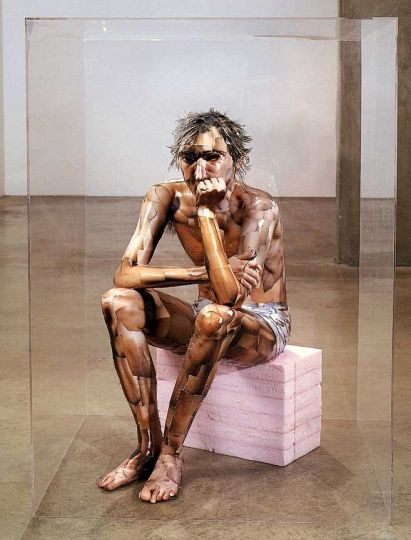Hindsight is all about understanding something after it has happened. When I go back to my very first post for this column on May 7, 2008 I had only a vague idea about how I was going to write a weekly column that focused on teaching with contemporary art. I had plenty I wanted to share as a new member of Art21’s education team, but was a little doubtful regarding how deep the well was. I mean… every week?
But now I understand the rhythm became a teaching tool for me. It sort of forced reflection when I needed it and allowed for me to share things when it was exciting to do so. Five years and 284 posts later, here we are, in a new place on the Art21 blog, with thematic writing every eight weeks, and Teaching with Contemporary Art posting every other Wednesday afternoon instead of weekly. I can’t say a lightening of the load is unwelcome. It offers an opportunity for digging deeper into the thematic strands Art21 will offer readers and it also allows a little extra time to do the pausing and reflecting that lead to better-quality posts.
Thinking about the column recently, one thing I realized is how much I love interviews. I love preparing them, participating in them and even occasionally transcribing them (with two fingers, of course). During these past five years I have been lucky enough to share conversations on the blog with Eleanor Antin, Janine Antoni (twice… talk about doubling your pleasure), Tod Lippy of Esopus, and Jessica Hoffmann Davis, not to mention unique and inspiring teachers such as Maureen Hergott and Julia CopperSmith. I’ve learned from talking with each of them that good questions and actual dialogue allow for moments of understanding that really can change practice. More specifically, I think about things like Janine Antoni’s comment on creativity and risk:
The thing that I’m interested in is that the creative process is never in a straight line, so if you teach in a straight line you won’t get the best results. To create you have to be out on a limb and to teach requires the same risk.
Looking backward I can’t help but look forward. Five years from now I hope to still be writing this column, perhaps in a different form. I look forward to more interviews with Art21 artists and contemporary art educators, especially those in our Art21 Educators program. But more than anything else, I look forward to a slow change in the tide, where American education becomes less obsessed with quantification and more obsessed with quality of experience. And I look forward to sharing the place that new visions of art education will have in the shift.
See you in two weeks.




